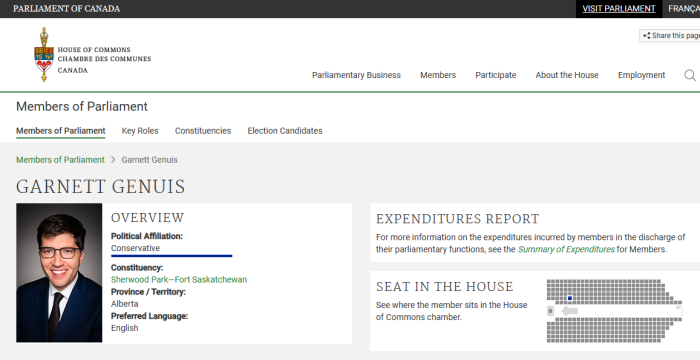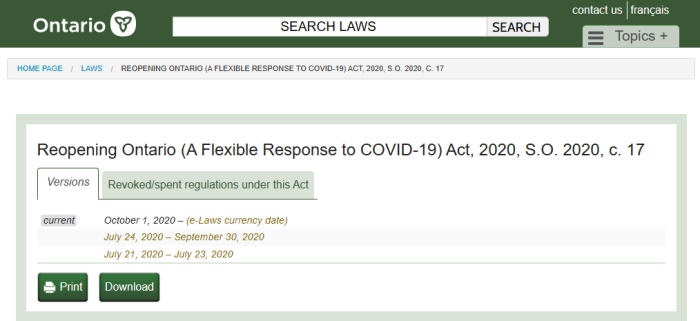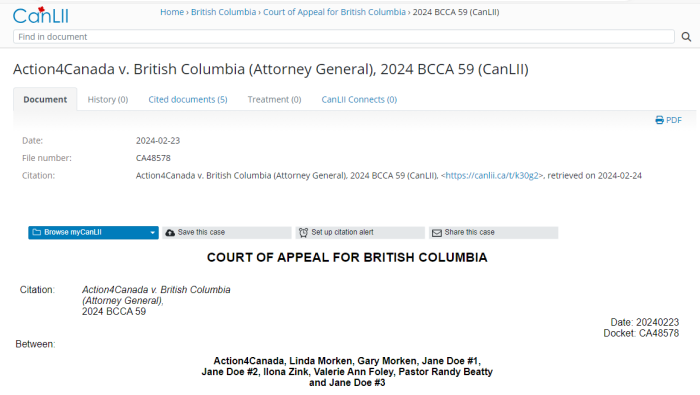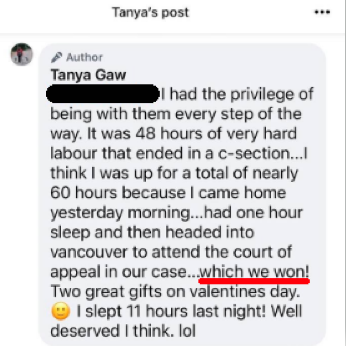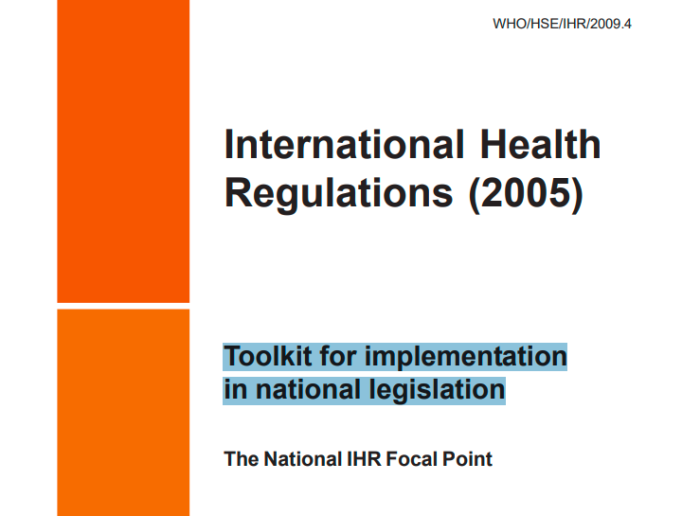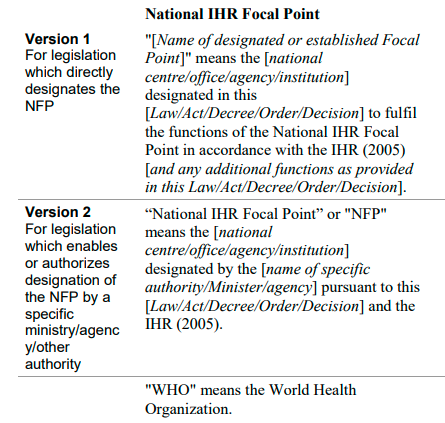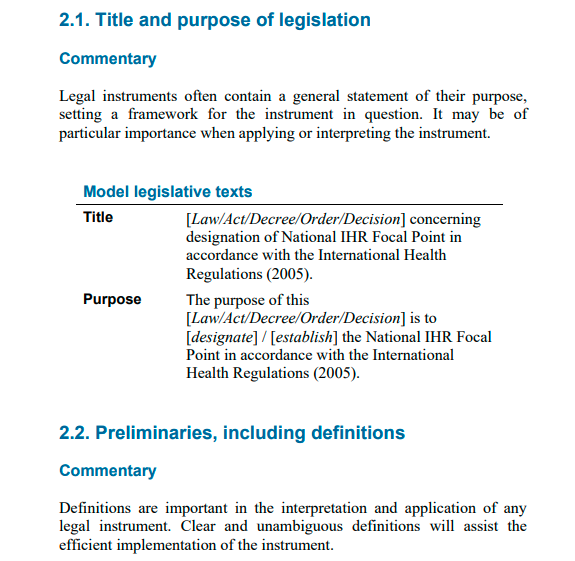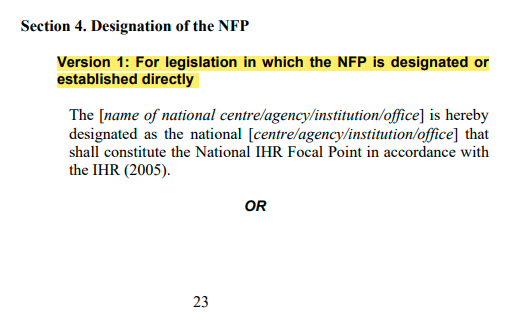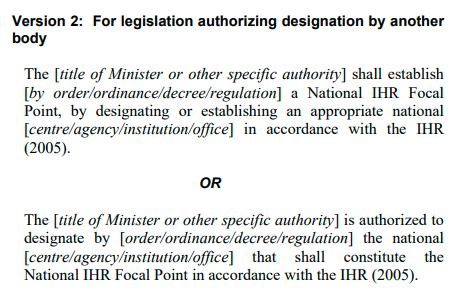

Throughout 2020 and 2021, people were understandably desperate. They wanted their lives and livelihoods back, and who could blame them? They were willing to open their wallets to contribute to lawsuits they viewed as a means to restore normalcy.
Unfortunately, it seems that many contributed — either through donations or retainer fees — to cases that never stood a chance. Either: (a) they were never filed; (b) filing was delayed unnecessarily; (c) they weren’t followed up in a diligent way; (d) the pleadings were incoherent; (e) the Court lacked jurisdiction; or (f) some combination of the above.
Back in 2020, Odessa from Liberty Talk claimed that 75% of donations received from that podcast would be forwarded to fund lawsuits from Vaccine Choice Canada and Action4Canada. She said that they were “really good legal cases”. Once eventually filed, the A4C case was struck as “bad beyond argument”, because it was so poorly written. The VCC case remained dormant for 2 1/2 years, before dates were set for a Motion to Strike.
Keep in mind, this is just a small sample. Another alarming trend is for lawyers to file suits against employers in government and/or unionized workplaces. Typically, there is no inherent right to sue, as there are “grievance” options available. Even moderately competent lawyers should be aware of this lack of jurisdiction.
Another trend is for lawyers to not actually ask for damages, but to seek declaratory relief after orders have already expired. This has led to several rulings of “mootness”.
Other cases included suing people for “defamation” in the attempt to shut down opposing viewpoints. These are SLAPPs, or strategic lawsuits against public participation. Pretty strange for freedom lovers to be against free speech.
How much money has actually been thrown away?
Here are some partial answers.
| Item Number |
Party/Client |
Amount Raised |
| 1 |
CRC (PayPal donations) |
$1,000,000 |
| 2 |
Action4Canada |
$400,000+ |
| 3 |
Federal Workers Vaxx Pass |
$600,000+ |
| 4 |
Federal Workers Vaxx Pass (Appeal) |
$600,000+ |
| 5 |
Federal Workers Vaxx Injury |
$600,000+ |
| 6 |
Take Action Canada |
$150,000+ |
| 7 |
Vaccine Choice Canada (2019) |
? |
| 8 |
Vaccine Choice Canada (2020) |
? |
| 9 |
Police On Guard |
? |
| 10 |
Children’s Health Defense (Canada) |
? |
| 11 |
Privacy Is Your Right |
? |
| 12 |
Kulvinder Gill Defamation #1 |
? |
| 13 |
Kulvinder Gill Defamation #2 |
? |
| 14 |
Byram Bridle |
? |
| 15 |
CPSO Challenges |
? |
| TOTAL |
N/A |
$3,350,000+ |
As should be apparent, there isn’t data for many of these. Still, there’s over $3,000,000 just from a handful of cases. Let’s dive a bit deeper.
1. Constitutional Rights Centre, PayPal Donations, $1,000,000
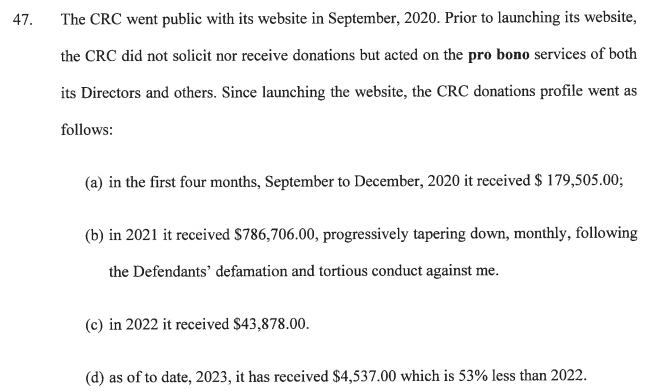
The above is Paragraph 47, Page 50 of the Respondent’s/Plaintiff’s Motion Record, filed in March 2023. This was the CSASPP lawsuit referenced earlier.
- $179,505 (September to December 2020)
- $786,706 (2021 calendar year)
- $43,878 (2022 calendar year)
- $4,537 (Up to March 2023)
Taking these numbers at face value, it would mean that the CRC raised roughly $1,000,000 from September 2020 through March 2023. There’s no breakdown as to how much went into each (case) account. On the surface, it looks like one giant pot. Pretty lucrative, considering all the suits that emerged were complete garbage.
Familiar with the Wayback Machine? It’s a mainstream archiving site that captures websites at certain times, even if the content is no longer available. Some of the recent business ventures include:
There were even donations sought at one point to finance a public inquiry. It’s unclear how much money came in, or whatever became of that.
Also, donations were sought a few years back for a B.C. doctor’s case that doesn’t appear to have materialized. This isn’t the Action4Canada suit.
Remember: these are just donations, and don’t take retainer fees into account.
2. Action4Canada, $400,000+


August 2021, Action4Canada filed their 391 page Notice of Civil Claim. It was incoherent, rambling, sought remedies outside the jurisdiction of a Civil Court, and was full of information about non-parties. Unsurprisingly, it was struck in its entirety as “bad beyond argument“.
While Justice Ross did allow the Claim to be rewritten, and provided substantial guidance, the decision was appealed instead. This is absurd, as the B.C. Court of Appeals isn’t going to rule that remedies outside the jurisdiction of a Civil Court can be sought.
Where does the $400,000 estimate come from?
According to financial data that was leaked, there was a payment of $200,000 to cover legal expenses April 29, 2022. See page 10. On May 5, an equivalent amount was transferred to cover it. This is not the full amount.
Tanya and other members of Action4Canada stated that a 50% retainer had been required upfront (meaning in 2020). If $200,000 is to cover an outstanding portion, then the retainer would have to have been at least $200,000 as well. It’s also been stated publicly that this was the amount sought.

In a November 2022 update, Action4Canada was again soliciting donations, presumably to finance this “unexpected” appeal. This would be in addition to the $200,000 retainer, and the $200,000 “payment” in the Spring of 2022. Once the BCCA throws out the appeal, presumably a new Claim would be filed.
Court documents are available at the bottom here.
3. Federal Injection Pass Challenge, $600,000+
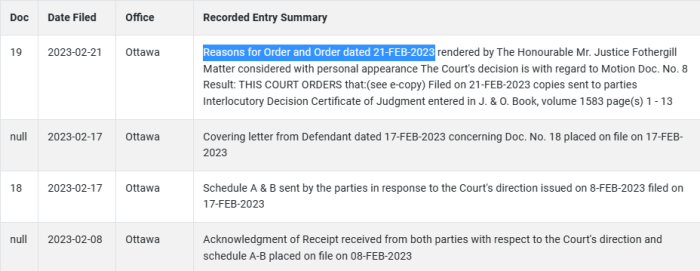
This was the high profile case of over 600: (a) Federal employees; and (b) employees of Federally regulated industries. It was struck as “bad beyond argument” for failing to follow even the basic requirements of pleadings.
Why $600,000? There were over 600 Plaintiffs, and all had been required to sign a retainer agreement and put up $1,000 each to get started.
There was another problem for about 2/3 of the Plaintiffs: as Federal employees, they have the right to grieve, but not to sue their employer. This is laid out in the Federal Public Sector Labour Relations Act. Now, there is some “residual jurisdiction”, if the grievance process can be shown to be unworkable or corrupt. However, that would require a suit that was well written.
(1) Federal Court Vaccine Mandate Challenge
(2) Federal Vaccine Passport Challenge Retainer Agreement
(3) Federal Court Vaccine Mandate Challenge Motion To Strike
(4) Federal Court Vaccine Mandate Challenge Affidavit Of Service
(5) Federal Court Vaccine Mandate Challenge Responding Motion Record
(6) Federal Court Of Canada Rules
(7) Federal Court Decision On Motion To Strike (Archive)
(8) https://decisions.fct-cf.gc.ca/fc-cf/decisions/en/item/522970/index.do
4. Federal Injection Pass Challenge, APPEAL, $600,000+

According to correspondence from disillusioned clients, costs to the Federal Court of Appeals are separate from the original $1,000 retainer.
That’s right. Over $600,000 was needed to start the case, and then another $600,000 was needed to go to the Court of Appeals, and possibly the Supreme Court of Canada. Quote:
The fee retainer of $1,000 ($870 + $130 HST) covers a trial to the end in the Federal Court, including any motions, but not appeals to the Court of Appeal.
We also have this email:
Hello everyone,
Some of you have already heard but for those who haven’t, the Judge has rendered his decision in the Government’s motion to strike our claim. In a somewhat anticipated move, the claim was struck for 2/3 of the plaintiffs and remains open for 1/3 to amend the claim and resubmit. There is a letter attached from Rocco himself that goes into greater detail about the decision. Needless to say, the decision was an absolute pile of rubbish and the Panel has decided to appeal the decision.
Now, as you will read in Rocco’s attached letter, there are additional fees associated with launching the appeal. The additional fees are minimal in comparison to the initial retainer but an explanation is required.
As Rocco’s letter will clarify, the retainer fee was to cover all that was required to see this matter through a trial in the Federal Court. Now that an appeal is required, it is required to go through the Federal Court of Appeals and that alone will cost in excess of $100,000. Rocco budgeted the retainer fee on doing everything to see a trial through the Federal Court which did not include appeals.
We feel it necessary at this juncture to apologize to each and every one of you. We misinterpreted the finer details of what the retainer fee covered due, no doubt, to our limited knowledge about how the civil court process works and a misunderstanding of the information Rocco provided to us. Some of you asked specifically what all would be covered with the retainer fee and were informed it would cover this entire matter all the way through no matter what action was required and for this, we apologize.
We wish to reinforce with you that this was not done out of an attempt to deceive or act maliciously. We are going to be out the same amount as anyone else who desires to proceed and be a part of the appeal.
To avoid repeating the same confusion, the panel asked Rocco to outline the cost implications for every step and all the way to the Supreme Court which Rocco now outlined in his letter. We hope this will better serve all of us and it is also our hopes that you will see this effort by the panel as a way to remain fully transparent on what transpired but also on what to expect going forward. We too, do not want to see other surprises but more importantly, we do agree with Rocco that we have a strong position for an appeal. We ultimately hope for our day in Court but sadly, we did not have our day in Court here as our lawsuit was wrongly struck down as evidently explained in Rocco’s letter.
We are planning to host another info session with Rocco via Zoom within the next few weeks to answer questions you may have and to provide more information regarding how the appeal process will work. We are not going to attempt to solicit any money from anyone prior to this information session. Our intent is to allow you to consider whether each of you as individuals wish to proceed from this point.
We understand many of you will have questions. We will do our best to answer them or have Rocco address them in the upcoming info session.
We have also attached a link to the decision on the Federal Court website.
Sincerely and most humbly,
The Federal Employee Lawsuit Panel
Never mind that the case was struck as “bad beyond argument” due to the gross incompetence of counsel. If there was to be any appeal, or extra work, he should fix it for free.
(1) FCA Adelberg V. HMTK A-67-23 Notice Of Appeal
(2) FCA Adelberg V. HMTK A-67-23 Appeal Book
(3) FCA Adelberg V. HMTK A-67-23 Appellants MFL
(4) FCA Adelberg V. HMTK A-67-23 Respondents MFL
5. Federal Workers Injection Injuries, $600,000+

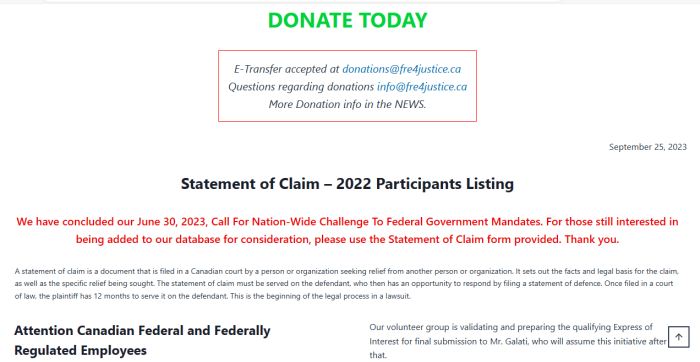
It has the same fundamental problem as the last Federal case. Under s.208 and s.236 of the Federal Public Sector Labour Relations Act, Federal workers have the right to grieve, but not to sue. This will get thrown out for lack of jurisdiction alone. Why $600,000? From the site:
Legal Costs: Total retainer fee is about $600,000, which will be divisible by the number of signed Plaintiffs. As an example, 600 + Plaintiffs @ $1,000 each. If the Plaintiff count should be lower, the retainer fee will be pro rated as an example, 300 + Plaintiffs @ $2,000 each. To put this into perspective, this represents about a year’s supply of a latte at Starbuck’s, each day or your annual vehicle insurance. At this time, please do NOT submit your retainer fee. If there is enough interest then a simple one-page retainer agreement will be forwarded and then the retainer agreement and it’s fee can be submitted at that time. We will provide the details at a later time.
Interestingly, the site went down (or was taken down) shortly after it was exposed. Perhaps too many questions were being asked about the suit’s legitimacy.
https://web.archive.org/web/20231111011348/https://fre4justice.ca/
6. Take Action Canada, First Responders, $150,000+

Apparently, this is the new “iteration” of the 2021 Application that Police On Guard had been pushing. And like the POG case, this is terribly written.
Where does the $150,000 figure come from? There are about 100 clients, all of whom have paid a $1,500 retainer in order to be part of this case.
Even though injection passes became a reality in Summer/Fall of 2021, this suit wasn’t filed until March 1, 2023, about a year and a half later. Clearly, it’s not urgent. And even if these people were to find a real lawyer who could get them into court, the Statute of Limitations has likely expired.
Another serious problem will be the lack of jurisdiction. Since most or all of the Plaintiffs are members of a Government and/or belong to a union, they likely don’t have the right to sue. They can grieve — but apparently didn’t — though there’s probably no access to the Court.
This document was leaked in late November. If authentic, it may be a way to engineer an excuse to discontinue the case. Plaintiffs have already paid $1,500 each for a case that took 18 months to file. They’re not going to hand over another $4,500 per person.
(1) Ontario EMS Statement Of Claim
(2) Ontario EMS Amended Statement Of Claim
(3) Ontario EMS Requisition To Amend
(4) Ontario EMS Notice Of Intent To Defend
(5) Ontario EMS Demand For More Money
7. Vaccine Choice Canada (2019)
Few people remember this, but Vaccine Choice Canada actually has 2 separate lawsuits pending in Ontario Superior Court. The first was filed in October 2019, supposedly to challenge the vaccination requirements of Ontario students. However, that was over 4 years ago, and it doesn’t look like it’s ever been in Court.
(1) VCC – Statement Of Claim, October 2019 Lawsuit
(2) VCC – Statement Of Defence, October 2019 Lawsuit
(3) VCC – October 2019 Press Release
8. Vaccine Choice Canada (2020)
This high profile case was filed on July 6, 2020, when there were still high hopes that a legal solution existed. After it was launched, Vaccine Choice went on a media blitz trying to raise support and donations.
Problem is: nothing ever came of it. It sat idly from July 2020 until January 2023, where there was a Court appearance to set down dates for a Motion to Strike. That’s right, there was no meaningful activity of any kind for 2 1/2 years.
(1) VCC – Statement Of Claim Unredacted
(2) VCC – Discontinuance Against CBC
(3) VCC – Discontinuance Against CBC With Cover Letter
(4) VCC – Mercer Statement Of Defense
(5) VCC – Mercer Affidavit Of Service
(6) VCC – Requisition For CPC Motion To Strike
(7) VCC – Notice Of Motion To Strike
(8) VCC – Factum WEC Wajid Ahmed
(9) VCC – Factum Nicola Mercer
(10) VCC – Factum Federal Defendants
9. Police On Guard

Although Police On Guard is not a client or party, they pushed this April 2021 Application very hard, on behalf of Ontario police officers who were unhappy with their new roles. There was never any hearing though. It likely wouldn’t matter anyway, since cops are usually bound by collective bargaining agreements and can’t sue their employer.
However, their counsel has since confirmed that the case is no longer being pursued, and that the matter is considered “moot”. Apparently, it was rolled over into what is now the Take Action Canada case.
POLICE ON GUARD/OFFICERS:
(1) Notice Of Application — April 20, 2021
POLICE ON GUARD CORPORATE DOCUMENTS:
(1) Police On Guard Incorporation
(2) Police On Guard Registered Office & Directors
(3) Police On Guard Directors
(4) Police On Guard Bylaws
(5) Police On Guard Directors Later
10. Children’s Health Defense (Canada)

This was another Application from April 2021, that also isn’t being pursued, since it’s supposedly “moot”. Never been in Court either. Okay, how much was raised, and has any of the money been returned? Worth noting that the POG and CHDC Applications are almost identical, with just minor edits.
Some would view it as a conflict of interest to be a Director of CHDC, at the same being paid as counsel to represent them in litigation. Just a thought.
ONTARIO STUDENTS/CHDC:
(1) Notice Of Application — April 20, 2021, Masks On Students
(2) Schools – Rule 2.1.01 Decision
(3) Schools — Notice Of Appearance Robert Kyle
(4) Schools — Notice Of Appearance Halton Durham
CHD CANADA CORPORATE DOCUMENTS:
(1) Childrens Health Defense Canada Registered Office
(2) Childrens Health Defense Canada Incorporation
(3) Childrens Health Defense Registered office & Directors
(4) Childrens Health Defense Canada Annual Return
11. Privacy Is Your Right
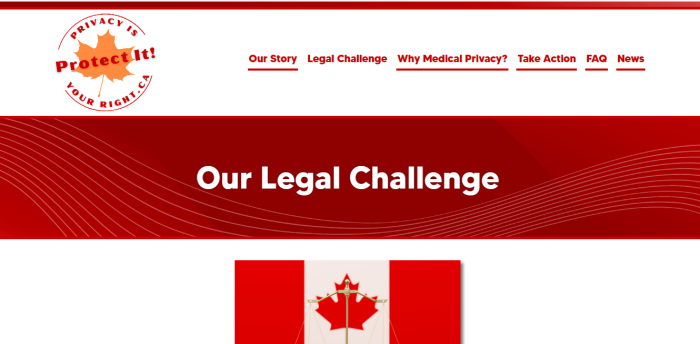
A group operating under the name “Privacy Is Your Right” solicited money from the public in a March 27, 2023 Zoom hearing, in order to take the CPSO to Court. In short, the doctor involved didn’t want to turn over records to the medical regulator, and several patients sought standing to challenge the demand, citing privacy.
The case was heard on March 30, and thrown out the same day. Leave was sought to go to the Ontario Court of Appeals. While the sudden verdict seemed odd, reading the decision cleared things up.
[13] In Kilian, at para. 44, this Court confirmed that patients have no private interest standing in the circumstances where the CPSO has initiated an investigation into a member’s conduct, stating as follows:
.
The Patient Applicants do not have a personal legal interest in the ICRC’s decisions to authorize an investigation of Dr. Kilian’s conduct or to place restrictions on her certificate. They have concerns that their medical records will be disclosed to College investigators, but that does not justify a grant of private interest standing, given the purpose of the regulatory regime and the subject matter of the judicial review proceeding.
[14] In Kilian, at para. 45, this Court held that a finding of private interest standing would be contrary to the statutory purpose, which is to regulate physicians’ conduct in the public interest. A finding of private interest standing would “disrupt” professional regulation because it would entitle thousands of patients to standing at the investigation stage: Kilian, at para. 47. This Court also noted that the Code grants patients standing in certain limited circumstances, further demonstrating the legislature’s intention to circumscribe patient participation in the regulatory process.
[15] Moreover, in Kilian, this Court went on to find that the patients have no direct interest in the decisions under review, which involve the regulator and the member. Similarly, the restrictions on the physician’s certificate in that case did not affect the patients’ legal interests: Kilian, at paras. 49-50. We see no reason to depart from the thorough and persuasive analysis conducted by this Court in Kilian.
Are Dr. Kustka’s Applications for Judicial Review Premature?
.
[29] As this Court recently confirmed in Kilian, judicial review applications challenging decisions to initiate investigations under s. 75(1)(a) of the Code are generally dismissed as premature: Berge v. College of Audiologists and Speech-Language Pathologists of Ontario, 2022 ONSC 1220, at para. 7. Challenges to the appointment of investigators, including the College’s compliance with any statutory requirements, can and should be made before the Discipline Committee, if the matter proceeds to that stage.
In short, the exact same issues had already been argued (and decided) by the Courts. The ONCA has also weighed in on the matter. It was premature to sue to prevent the CPSO from instigating proceedings against a doctor. It had also been decided that patients can’t claim private interest standing to prevent such a thing from happening. All of this was previously treaded ground.
Of course, this hadn’t been disclosed at the Zoom call. It wasn’t mentioned that all of the issues being argued had already been settled. Would people still have donated if they knew? And how did they rake in?
12. Kulvinder Gill Defamation #1
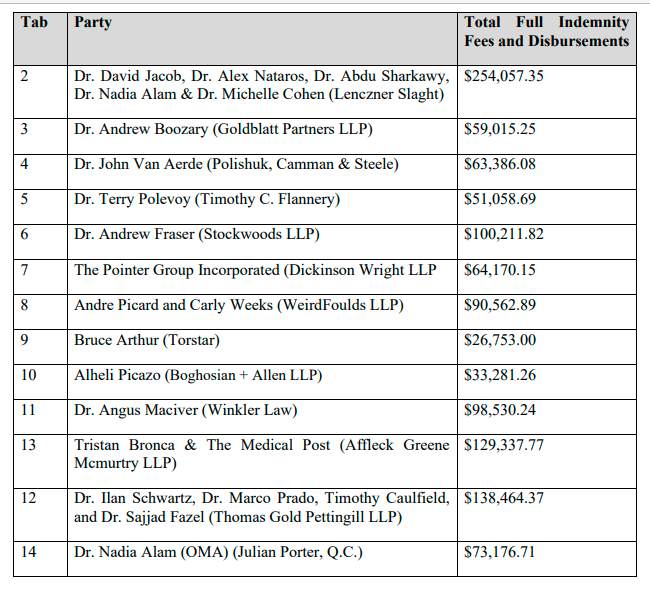
Kulvinder Gill and Ashvinder Lamba (well, mostly Gill) made headlines in December 2020 by filing a $12.75 million defamation lawsuit against 23 people and media outlets. While it mainly had to do with spats on Twitter, portions of the suit related to issues with the CPSO investigations.
It’s unclear what Gill and Lamba paid for legal representation, but the other side claimed well over $1 million in costs. They were awarded them on a full indemnity (100%) basis.
The ruling was appealed, and it’s long been suspected that this was “leverage” in order to bargain for more favourable settlement terms.
Yes, the Defendants had said some rude things on Twitter, but filing this suit just makes Gill and Lamba come across as unhinged and vindictive. One would think that the “freedom movement” would disavow such loonies.
(1) Gill/Lamba Defamation Lawsuit December 2020
(2) Gill/Lamba Factum Of Medical Post Tristan Bronca
(3) Gill/Lamba Case Dismissed As A SLAPP
(4) Gill/Lamba Notice of Appeal and Appellants’ Certificate
(5) Gill/Lamba Appeal – Notice of Intention to Dismiss Appeal for Delay, May 12, 2022
(6) Gill/Lamba July 15 Letter To Obtain New Counsel
(7) Gill/Lamba Case Conference Brief July 29, 2022
(8) Gill/Lamba Endorsement New Counsel Cost Submissions August 3, 2022
(9) Gill/Lamba Case $1.1 Million In Costs Ordered October 31, 2022
13. Kulvinder Gill Defamation #2

This isn’t Gill’s only trip through the “gag proceedings” rodeo. March 2021, she sued the University of Ottawa, and one of its professors, Amir Attaran, for calling her an idiot on Twitter. She demanded $7 million in damages.
At the moment, the University has initiated an anti-SLAPP Motion against her. Unclear how much this will cost either side, but it really is a nonsense lawsuit.
(1) Gill-Attaran Statement Of Claim
(2) Gill Attaran Affidavit Of Service
(3) Gill-Attaran Notice Of Intent
14. Byram Bridle, University Of Guelph
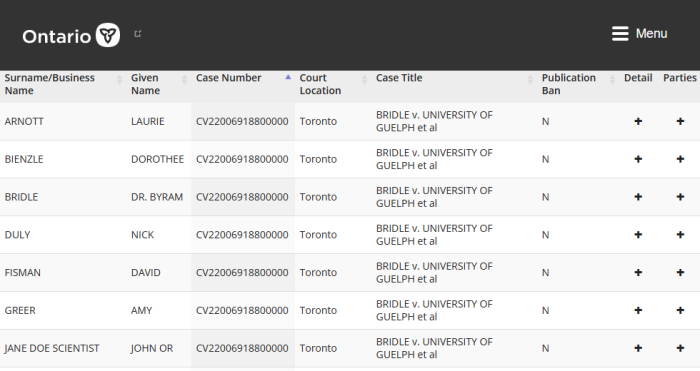
It’s a bit hard to describe this case. Although it’s cloaked as protecting the speech and expression of a freedom fighter, the claim is filled with petty drama.
Given the parties involved — staff at the University of Guelph — the Court is likely to gut the case, at least regarding some Defendants. Guelph has it’s own collective bargaining agreement, so there will likely be a lack of jurisdiction for at least some of them.
Considering the allegations around speech and expression, the case is also vulnerable to an anti-SLAPP Motion, which would grind everything to a halt.
Seems like a waste of money all around.
(1) https://canucklaw.ca/wp-content/uploads/Byram-Bridle-Statement-Of-Claim.pdf
(2) https://canucklaw.ca/wp-content/uploads/Byram-Bridle-Statement-Of-Defence.pdf
(3) https://canucklaw.ca/byram-bridle-lawsuit-unlikely-to-ever-get-anywhere/
15. CPSO Challenges
There have been several challenges of medical doctors going to Court in order to avoid potential discipline hearings, or to prevent disclosure of documents. These have never gone anywhere, since the Courts find it “premature” to wade into matters involving a regulator until things are settled.
The rationale is that if a doctor — or any regulated professional — could simply file a lawsuit when threatened, it would render the governing body helpless. While these challenges may be noble, they’re destined to fail.
Stay of related tribunal proceeding
.
137.4 (1) If the responding party has begun a proceeding before a tribunal, within the meaning of the Statutory Powers Procedure Act, and the moving party believes that the proceeding relates to the same matter of public interest that the moving party alleges is the basis of the proceeding that is the subject of his or her motion under section 137.1, the moving party may file with the tribunal a copy of the notice of the motion that was filed with the court and, on its filing, the tribunal proceeding is deemed to have been stayed by the tribunal. 2015, c. 23, s. 3.
That being said, there is an exception. For the “freedom doctors” who object to the CPSO shutting down their free speech, s.137.4(1) of the Courts of Justice Act, or anti-SLAPP laws, allow such matters to be removed from the regulatory body, at least in Ontario. It’s baffling why none of them ever seem to use it.
16. Some final thoughts
This has been an attempt to document at least some of the money paid to lawyers in the last few years. Clearly, not all categories have dollar amounts attached, so the actual figures are much larger. While $3,350,000 can be tracked, it wouldn’t be surprising if it were closer to $10 million, or higher.
Pretty lucrative, isn’t it? And all for cases that were never pursued in any meaningful way. One would think that more donors and clients would be demanding refunds.
How much money did Vaccine Choice Canada receive for 2 lawsuits they aren’t advancing? How much did the case pushed by Police On Guard raise? Children’s Health Defense Canada?
This is likely why the Toews lawsuit happened back in June 2022. She had requested that the Law Society of Ontario investigate what had happened to her donations, as neither the Vaccine Choice nor Action4Canada cases seemed to be moving. Unlike with most complaints, the LSO demanded a response this time, which could easily have triggered an audit into the case financings. Suing her was a way to buy time, and to derail the investigation. Justice Chalmers (rightly) found that this was an act of intimidation.
Suing the Law Society itself, both in 2022 and 2023, was also likely done to buy time. The first one is under reserve on a Motion to Strike, with the second idle for the time being.
And covering these suits was the reason this website was sued in September 2021. Apparently, we can’t have the public asking too many questions about the quality of the work from the “freedom lawyers”.
Why keep pursuing this area?
If it can be destroyed by the truth, then it deserves to be destroyed by the truth.
Like this:
Like Loading...

